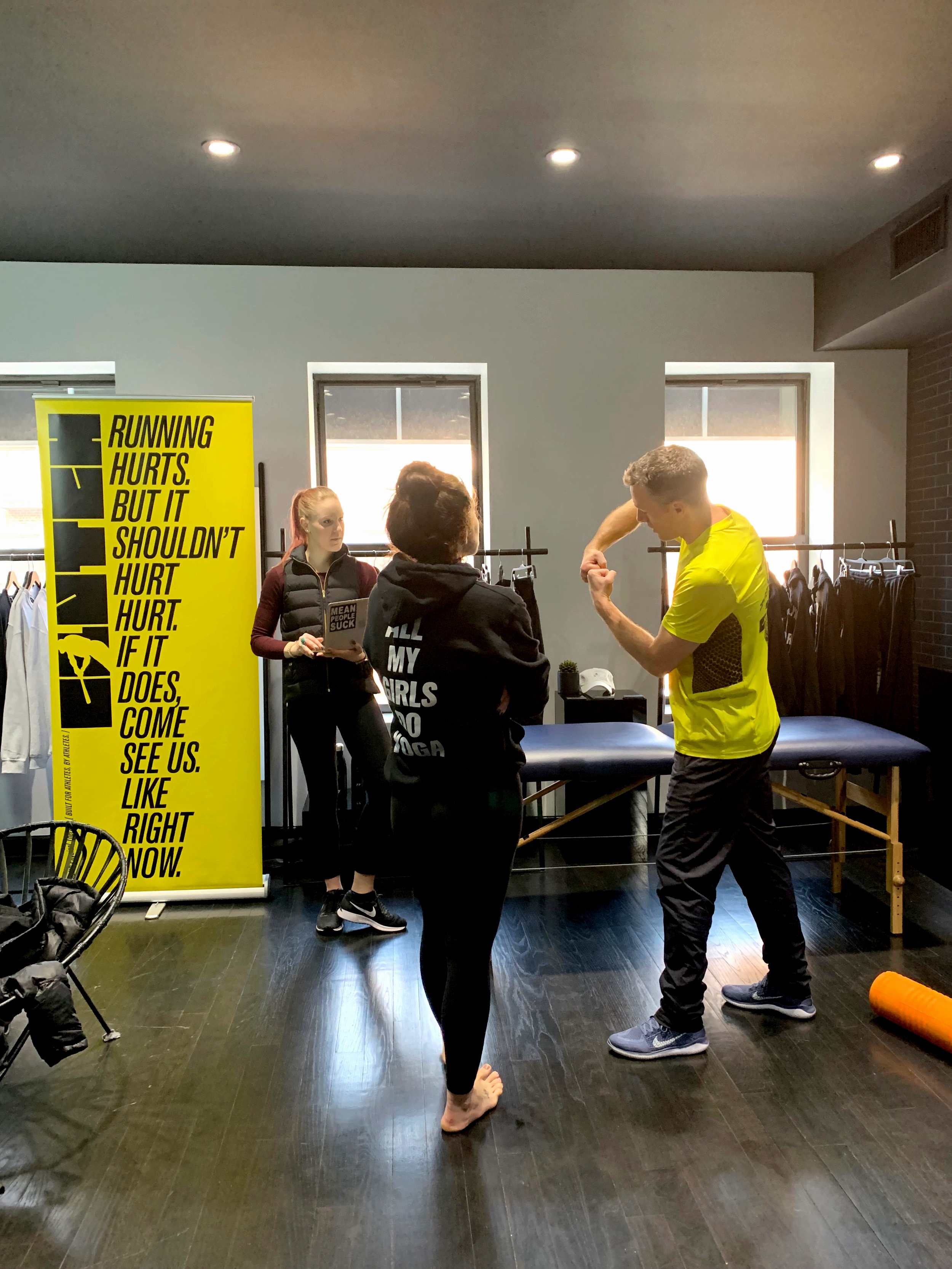With a background in training high level collegiate and pro athletes, Dr. James set out to prove that even newbie marathoners can strength train just like elite team sport athletes. He believed they could not only succeed, but become faster, stronger and more efficient. Here’s what happened!
Marathoners often find themselves asking “Should I run through this pain?” The answer comes down to the type of pain you’re experiencing. Use this handy scale of Pain Levels 1-5 to figure out if you’re safe to keep on keeping on, or if you should get checked out by a physical therapist.
Not all injuries can be prevented, but all athletes can reduce injury risk by working with a sports rehab specialist. It’s within every athlete’s control to work past injury rehabilitation toward injury prevention and ultimately achieve optimized performance.
Why do so many of us merely consume healthcare, complacent with what an insurance company dictates we need? In every other aspect of our lives, we are we discerning customers. We should expect and seek expertise that will accelerate recovery and prevent injury in the first place. We only get one body, and it has to hold up to help us accomplish everything we dream of doing. Shouldn’t that be worth more than what you’re chalking it up to now?
We often have athletes come through our doors looking to achieve perfect alignment in their form, convinced that their asymmetries are what’s holding them back. While it’s true that asymmetries can lead to injury and chronic tightness, or be the culprit behind race day disappointment, the bottom line is, “perfect alignment” does not exist. The human body is naturally asymmetrical. The challenge is to work WITH an asymmetry, not against it.
We’ve been lead to believe that the more kegels we do, the better our sex life will be, and we won’t pee ourselves when we laugh or run after having kids. Turns out, it’s not quite that simple. We go over some common misconceptions about kegels and the benefits of pelvic floor physical therapy.
As physical therapists, we are taught to find the biomechanical problem and fix it. But unfortunately, many clinicians don’t look at the body as a whole. Rather than finding the true problem, they use an orthotic to correct the biomechanics of the foot. This won’t fix the real issue. Orthotics are such a frequent topic among our athletes, we posted our (strong!) opinions on them.








